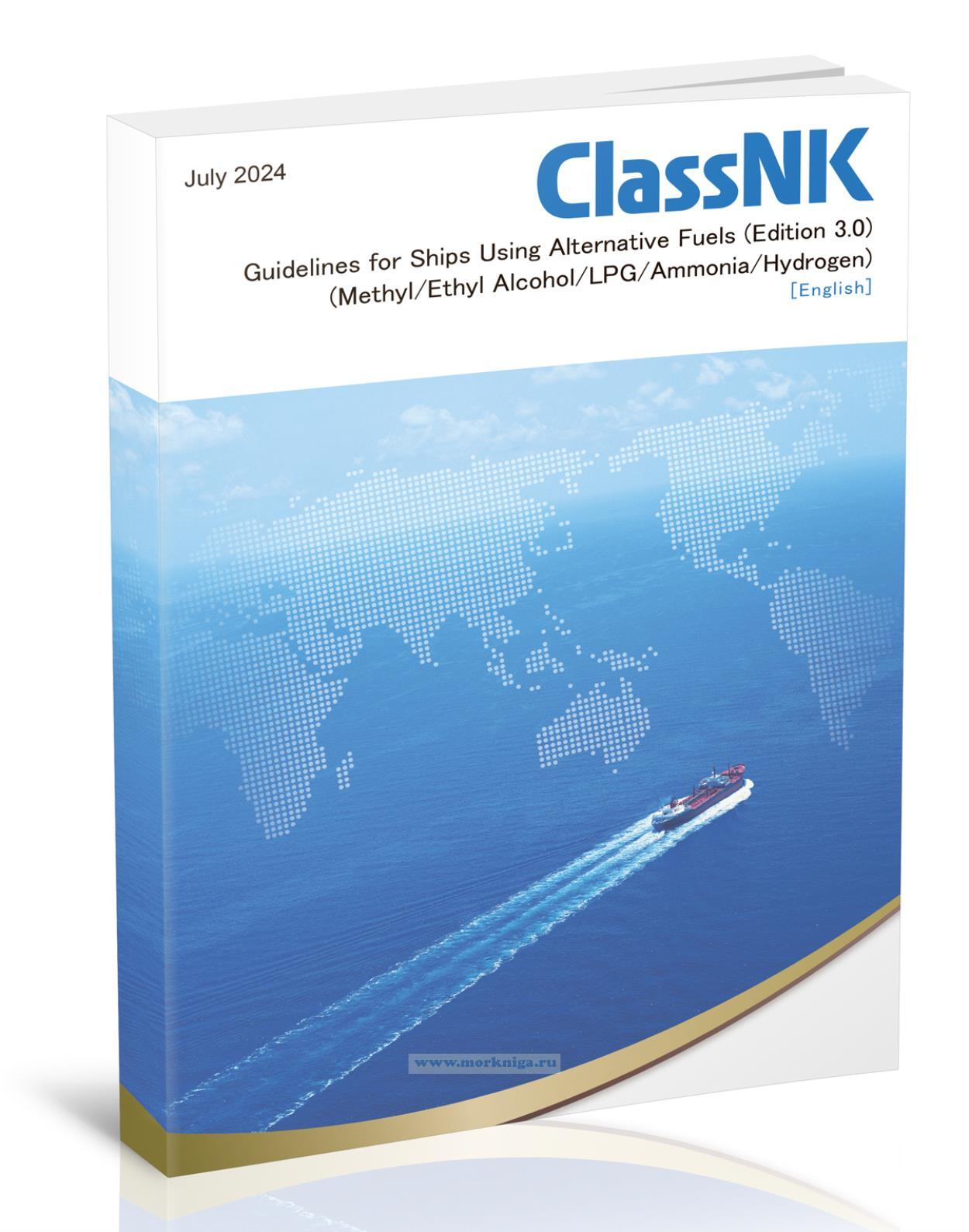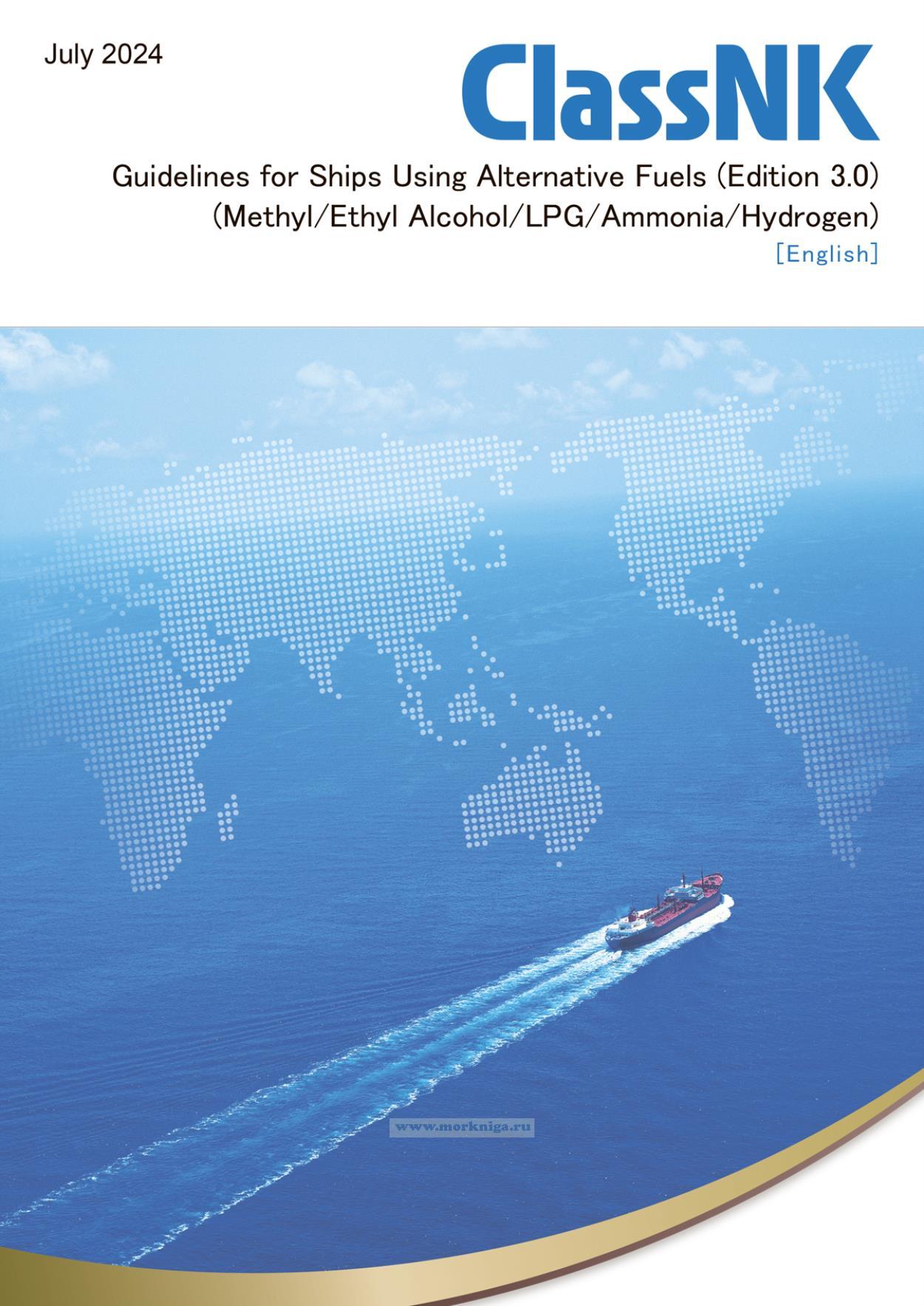Guidelines for Ships Using Alternative Fuels (Methyl/Ethyl Alcohol/LPG/Ammonia/Hydrogen)/Руководство для судов, использующих альтернативные виды топлива (метиловый/этиловый спирт/сжиженный газ/аммиак/водород)
Книга на английском языке
The IMO developed the International Code of Safety for Ships Using Gases or Other Low-flashpoint Fuels (more commonly referred to as the “IGF Code”) as internationally common safety requirements for ships using gas or other low-flashpoint fuels, and it has been in effect since January 1, 2017. Though the IGF Code subject ships using gases or other low-flashpoint fuels, safety requirements are addressed only for LNG. In addition, ClassNK (hereinafter referred to as “the Society”), in turn, added a new part to its Rules and Guidance for the Survey and Construction of Steel Ships in 2017 called Part GF: Ships Using Low Flashpoint Fuels in order to fully incorporate the requirements of the IGF Code into its technical rules. The IMO have issued the safety requirements for the fuel which the industry has started to use as ship f^iel as a non-mandatory guidelines, and add them to the IGF Code in order. As of 2024, the IMO guidelines for methanol and LPG fuel had been issued, and the discussion for issuance of the guidelines for hydrogen, and ammonia fuel is progressing in the IMO. The society has issued Guidelines for Ships Using Low Flashpoint Fuels, referring these IMO guidelines and the safety requirements for alternative fuels under development by the IMO.
In addition to the above, the Society has developed regulations of “Ready Notation” in annex of the Guidelines, for ships that do not use Gases or Other Low-flashpoint Fuels at the time of their construction but are desigmed and partially equipped for the future use of such fuels.
We hope the Guidelines will provide practical guidance for shipyards, manufacnirers, shipowners, managers, and operators looking to prepare their fleets for a safer and greener future. Its purpose is to simply provide support to designers with respect to the current requirements, and it will be amended as may be deemed necessary in accordance with any changes made to the IGF Code by the IMO as well as in consideration of any new technologies introduced in the future.
Contents
Part A
Guidelines for ships using methyl/ethyl alcohol as fuels
Chapter 1. Preamble
Chapter 2. General
Chapter 3. Goal and functional requirements
Chapter 4. General requirements
Chapter 5. Ship design and arrangement .
Chapter 6. Fuel containment system
Chapter 7. Material and general pipe design
Chapter 8. Bunkering.
Chapter 9. Fuel supply to consumers
Chapter 10. Power generation including propulsion and other energy converters
Chapter 11. Fire safety
Chapter 12. Explosion prevention and area classification
Chapter 13. Ventilation
Chapter 14. Electrical installations
Chapter 15. Control, monitoring and safety systems
Chapter 16. Training, drills and emergency exercises
Chapter 17. Operation
Part B
Guidelines for ships using LPG as fuel
Chapter 1. Preamble
Chapter 2. General
Chapter 3. Goal and functional requirements
Chapter 4. General requirements
Chapter 5. Ship design and arrengement
Chapter 6. Fuel containment system
Chapter 7. Material and general pipe design
Chapter 8. Bunkering
Chapter 9. Fuel supply to consumers
Chapter 10. Power generation including propulsion and other gas consumers
Chapter 11. Fire safety
Chapter 12. Explosion prevention
Chapter 13. Ventilation
Chapter 14. Electrical installations
Chapter 15. Control, monitoring and safety systems
Chapter 16. Manufacture, workmanship and testing
Chapter 17. Operating requirements
Chapter 18. Use of cargo as fuel
Part C
Guidelines for ships using ammonia as fuel
Chapter 1. Preamble
Chapter 2. General
Chapter 3. Goal and functional requirements
Chapter 4. General requirements
Chapter 5. Ship design and arrangement
Chapter 6. Fuel containment system
Chapter 7. Material and general pipe design
Chapter 8. Bunkering
Chapter 9. Fuel supply to consumers
Chapter 10. Power generation including propulsion and other gas consumers
Chapter 11. Fire safety
Chapter 12. Explosion prevention and protection from toxicity
Chapter 13. Ventilation
Chapter 14. Electrical installations
Chapter 15. Control, monitoring and safety systems
Chapter 16. Manufacture, workmanship and testing
Chapter 17. Operating requirements
Chapter 18. Use of cargo as fuel
Chapter 19. Additional safety measures for engine rooms.
Appendix1. Ammonia leak frequency for onboard ammonia fuel components .
Part D
Guidelines for ships using hydrogen as fuel
Chapter 1. Introduction
Chapter 2. General
Chapter 3. Additional requirements
Annex 1. Safety verification of machinery and equipment
Annex 1
Alternative fuel ready
Chapter 1. General
Chapter 2. Design approval
Chapter 3. Surveys

